
Baron Adrien Victor Joseph de Gerlache de Gomery was an officer in the Belgian Royal Navy who led the Belgian Antarctic Expedition of 1897–99.
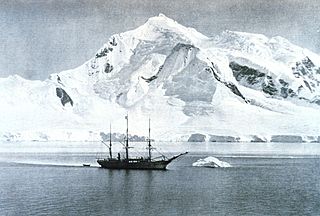
The Belgian Antarctic Expedition of 1897 to 1899 was the first expedition to winter in the Antarctic region. Led by Adrien de Gerlache de Gomery aboard the RV Belgica, it was the first Belgian Antarctic expedition and is considered the first expedition of the Heroic Age of Antarctic Exploration. Among its members were Frederick Cook and Roald Amundsen, explorers who would later be responsible, respectively, for the conquest of the North Pole and the South Pole.
The Morini were a Belgic coastal tribe, dwelling in the modern Pas de Calais region, around present-day Boulogne-sur-Mer.
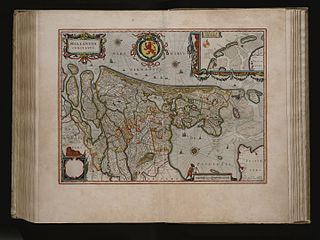
The Atlas Maior is the final version of Joan Blaeu's atlas, published in Amsterdam between 1662 and 1672, in Latin, French, Dutch, German and Spanish, containing 594 maps and around 3,000 pages of text. It was the largest and most expensive book published in the seventeenth century. Earlier, much smaller versions, titled Theatrum Orbis Terrarum, sive, Atlas Novus, were published from 1634 onwards. Like Abraham Ortelius's Theatrum Orbis Terrarum (1570), the Atlas Maior is widely considered a masterpiece of the Golden Age of Dutch/Netherlandish cartography.

Emil Gheorghe Racoviță was a Romanian biologist, zoologist, speleologist, and Antarctic explorer.
Acta Apostolicae Sedis, often cited as AAS, is the official gazette of the Holy See, appearing about twelve times a year. It was established by Pope Pius X on 29 September 1908 with the decree Promulgandi Pontificias Constitutiones, and publication began in January 1909. It contains all the principal decrees, encyclical letters, decisions of Roman congregations, and notices of ecclesiastical appointments. The laws contained in it are to be considered promulgated when published, and effective three months from date of issue, unless a shorter or longer time is specified in the law.
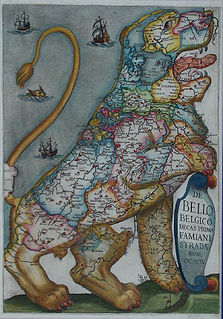
The Low Countries comprise the coastal Rhine–Meuse–Scheldt delta region in Western Europe, whose definition usually includes the modern countries of Luxembourg, Belgium and the Netherlands. Both Belgium and the Netherlands derived their names from earlier names for the region, due to nether meaning "low" and Belgica being the Latinized name for all the Low Countries, a nomenclature that went obsolete after Belgium's secession in 1830.

The hybrid elm cultivar Ulmus × hollandica 'Belgica', one of a number of hybrids arising from the crossing of Wych Elm with a variety of Field Elm, was reputedly raised in the nurseries of the Abbey of the Dunes, Veurne, in 1694. Popular throughout Belgium and the Netherlands in the 19th century both as an ornamental and as a shelter-belt tree, it was the 'Hollandse iep' in these countries, as distinct from the tree known as 'Dutch Elm' in Great Britain and Ireland since the 17th century: Ulmus × hollandica 'Major'. In Francophone Belgium it was known as orme gras de Malines.

Melitracen is a tricyclic antidepressant (TCA), for the treatment of depression and anxiety. In addition to single drug preparations, it is also available as Deanxit, marketed by Lundbeck, a combination product containing both melitracen and flupentixol.
1052 Belgica, provisional designation 1925 VD, is a binary Florian asteroid from the inner regions of the asteroid belt, approximately 10 kilometers in diameter. It was discovered on 15 November 1925, by Belgian astronomer Eugène Delporte at Uccle Observatory in Belgium. It was the first minor planet discovered at Uccle Observatory, after which the minor planet 1276 Ucclia was named.
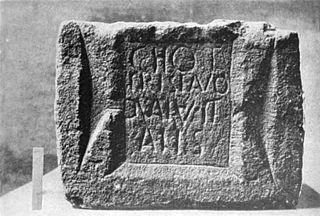
The Frisiavones were a Germanic people living near the northern border of Gallia Belgica during the early first millennium AD. Little known about them, but they appear to have resided in the area of what is today the southern Netherlands, possibly in two distinct areas, one in the islands of the river deltas of Holland, and one to the southeast of it. They may be related to the nearby Frisii, who in turn are traditionally considered to be ancestors of modern Frisians
The Caletes or Caleti were a Belgic or Gallic tribe living in Pays de Caux, in present-day Normandy.
The Paemani were a tribe of Belgae in Gallia Belgica, mentioned by Julius Caesar in his commentary of his Gallic Wars as Germani.

Clopimozide (R-29,764) is a typical antipsychotic drug of the diphenylbutylpiperidine class. It is very potent and has an extremely long duration of action, lasting at least one week with a single dose. It was developed by Janssen Pharmaceutica but was never marketed.

Mepiprazole is an anxiolytic drug of the phenylpiperazine group with additional antidepressant properties that is marketed in Spain. It acts as a 5-HT2A and α1-adrenergic receptor antagonist and inhibits the reuptake and induces the release of serotonin, dopamine, and norepinephrine to varying extents, and has been described as a serotonin antagonist and reuptake inhibitor (SARI). Controlled clinical trials of mepiprazole in patients with irritable bowel syndrome (IBS) were also carried out and suggested some benefits of the drug in relieving symptoms of IBS in some patients. Similarly to other phenylpiperazines like trazodone, nefazodone, and etoperidone, mepiprazole produces mCPP as an active metabolite.
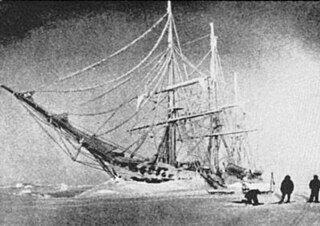
Belgica was a barque-rigged steamship that was built in 1884 by Christian Brinch Jørgensen at Svelvik, Norway as the whaler Patria. In 1896, she was purchased by Adrien de Gerlache for conversion to a research ship, taking part in the Belgian Antarctic Expedition of 1897–1901, becoming the first ship to overwinter in the Antarctic. In 1902, she was sold to Philippe, Duke of Orléans and used on expeditions to the Arctic in 1905 and from 1907–09.

The Confession of Faith, popularly known as the Belgic Confession, is a doctrinal standard document to which many of the Reformed churches subscribe. The Confession forms part of the Three Forms of Unity of the Reformed Church, which are still the official subordinate standards of the Dutch Reformed Church. The confession's chief author was Guido de Brès, a preacher of the Reformed churches of the Netherlands, who died a martyr to the faith in 1567, during the Dutch Reformation. De Brès first wrote the Belgic Confession in 1559.

Acta Neurologica Belgica is a quarterly peer-reviewed medical journal covering neurology. It was established in 1901 and is published by Springer Science+Business Media. It is an official journal of a number of Belgian medical societies. The editor-in-chief is Michel Van Zandijcke.

Fluroxene, or 2,2,2-trifluoroethyl vinyl ether, is a volatile, inhalational anesthetic, and was the first halogenated hydrocarbon anesthetic to be introduced. It was synthesized in 1951, and was introduced for clinical use in 1954, but was voluntarily withdrawn from the market in 1974 due to its potential flammability and accumulating evidence that it could cause organ toxicity. In any case, prior to being discontinued, it had largely been superseded by halothane. Fluroxene is metabolized to 2,2,2-trifluoroethanol, a compound responsible for some of the toxicity seen with fluroxene use.

Dienestrol diacetate is a synthetic nonsteroidal estrogen of the stilbestrol group related to diethylstilbestrol. It is an ester of dienestrol.















